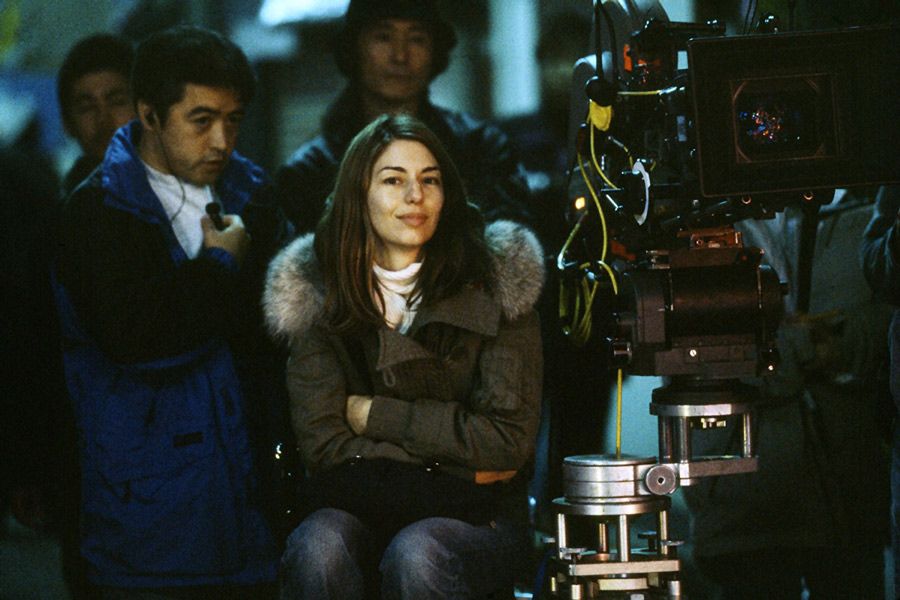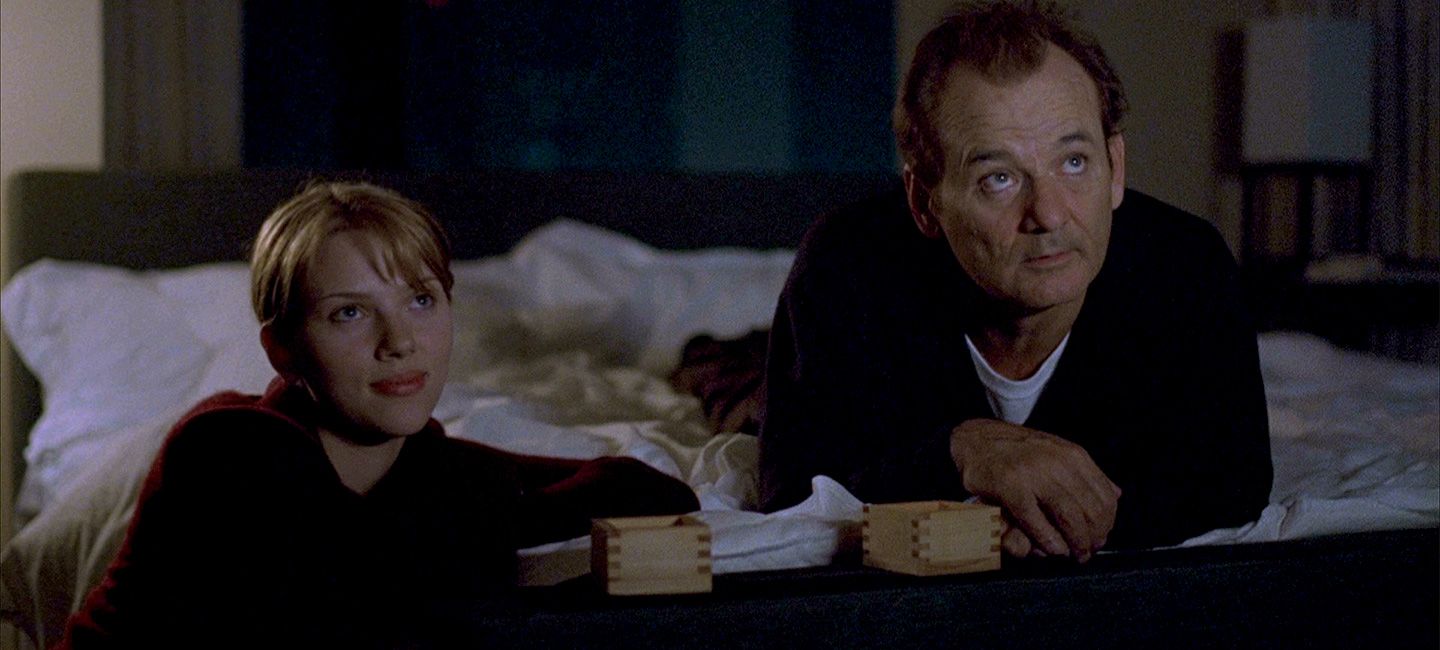When it opened in theaters on September 12, 2003, Sofia Coppola’s Lost in Translation proved a revelation. “I never expected people to connect with it so much,” Coppola admits. “There’s something about being naive that allows you to jump into things in a freer way.” Salon felt Coppola’s sophomore feature marked “her as one of our most gifted filmmakers (of either gender).” Equally astonishing were the two leads, newcomer Scarlett Johansson and comedy veteran Bill Murray. Today, Johansson is a major movie star, Murray a national treasure, and Coppola one of our great American auteurs. But when these three artists came together fifteen years ago, little did they know they would create something akin to a cinematic miracle.

Sofia Coppola oversees the action on the set of Lost in Translation.
The Origin
“The idea for Lost in Translation really started when I saw Charlie [Brown, the nickname of Fumihiro Hayashi] perform 'God Save the Queen' at a karaoke bar,” Coppola told IndieWire. “I said, ‘I have to put this in a movie.’” Once Coppola knew the where, it was just a matter of time to figure out the what and the who. “I spent a lot of time in Tokyo in my twenties and I really wanted to make a film around my experience of just being there,” explains Coppola. Armed with a talented crew, Coppola took to the streets of Tokyo and the hallways of the Park Hyatt to bring her vision to life.
The world was introduced to Scarlett Johansson's serene loveliness in Lost in Translation.
Scarlett Johansson
To play Charlotte, the young wife left alone at the Tokyo Park Hyatt by her photographer husband (Giovanni Ribisi), Coppola cast a relatively unknown 17-year-old Johansson (who was five years younger than her character). “There was some quality about her that stood out and I connected with,” remembers Coppola. “She’s able to convey a lot without saying anything.” For Rolling Stone, Johansson’s expressive silence has made her “an actress of smashing loveliness and subtle grace.”
Bill Murray reinvents himself as Bob Harris.
Bill Murray
To play Bob Harris, the middle-aged movie star in Tokyo shooting a Suntory Whisky commercial, Coppola only had one actor in mind—Bill Murray. “I wasn’t going to make the movie if he wasn’t doing it,” Coppola recalls. With no contract, the filmmakers didn’t know until the week before shooting began whether Murray would show up. When he did, he created pure magic. Nominated for a Best Actor Academy Award®, Murray’s performance, which moves seamlessly from slapstick to sentimental, revealed an actor no one had seen before. Slate’s David Edelstein felt like he was “seeing his face for the first time.”
Tokyo Park Hyatt provides a new perspective in Lost in Translation.
The Park Hyatt
Having stayed at the Tokyo Park Hyatt while promoting her earlier feature The Virgin Suicides, Coppola developed a love for the serene modernist building towering above a bustling city. “It’s just one of my favorite places in the world,” Coppola acknowledges. “Tokyo is so hectic, but inside the hotel it’s very silent.” Dreamily shot by cinematographer Lance Acord, the hotel became a character all its own. Today tourist books and city tours still highlight the film, and Instagram is filled with photo homages of guests mimicking scenes from the film.
Music brings the characters together in Lost in Translation.
The Soundtrack
If Charlotte and Bob come together doing karaoke versions of Bryan Ferry and The Pretenders, Coppola’s exquisite mix of music, from Air and My Bloody Valentine to Rick James and The Sex Pistols, give the film its emotional vitality. Rolling Stone named it one of their “25 Greatest Soundtracks of All Time” for its power to evoke a mood and a moment in time. For music site Noisey, “Coppola's choice of songs will turn anyone into an emotional sap capable of actual feelings."
Sign up for the Focus Insider newsletter to be first in line for free advance screenings, world premiere travel packages, weekend set visits, and so much more!
